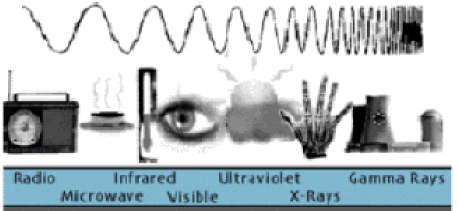BACKGROUND:
Physics is the study
of physical events on Earth and in the Universe. It is an attempt to
explain why and how certain events occur. Physics occurs whether we
understand it or not. For instance, when you pick up a book and drop it,
the force of gravity pulls it toward the Earth. (Illustrate this with
your students.) How does this happen? In part, this is still a mystery
because we know that larger objects attract smaller objects. Exactly how
they attract is not known. Whether you know why the book will fall or
not, the book will still fall.
There are 4 major
ways in which matter interacts on our planet. There are strong
interactions and weak interactions, which involve the use ways atoms
operate. Gravity is another interaction, which is mysterious, because we
donít feel a force, but its impact is widespread. Electromagnetism is
also an interaction, whose mysteries have been realized in the early
part of the 1900's.

Electricity and
magnetism are related and are the components of electromagnetism. Light
is a subset of the electromagnetic wave spectrum. The electromagnetic
wave spectrum also includes radio waves, microwaves, ultra violet rays,
x-rays, and gamma rays. Magnets exhibit both attractive and repulsive
forces. North attracts south, north repels north, and south repels
south.
Magnetism and electricity are
related. Both magnetism and electricity have
opposites. In magnets north repels north and south repels south,
but north attracts south. In electricity when you hook up positive and negative
electrodes can the electrons flow creating current electricity.
PROCEDURE:
-
Discuss with
students that the study of "physics" includes topics such as
gravity, electricity, magnetism, light and friction. The next several
units will concentrate on explaining electricity and magnetism. In
previous labs, students have experienced both phenomena. The third grade
is when students will begin understanding why these phenomena occur.
-
Go over the structure
of an atom with students. Remember all matter is made up of elements,
which are made up of atoms. Go over electrons, protons, and neutrons. On
the picture below point out that the nucleus is the center of the atom
with the neutrons (neutral) and protons (positive charge) are located. The
electrons (negative charge) are revolving around the nucleus. Electrons
are important in understanding electricity and magnetism

-
Show students the
periodic table of the elements. Remember all elements are made up of
atoms. Quiz them on their knowledge. For instance, "The gas we need
to live is called ______(students answer oxygen. What is the symbol?"
What is salt made up of? Sodium
(Na) and Chlorine (Cl)
What are several metals? Iron (Fe), Nickel (Ni)
What metal is a character from the Wizard of Oz made of? Tin (Sn)
What are rings made of? Gold (Au), Silver (Ag)
-
Ask students how
many elements are naturally magnetic. The only three
naturally magnetic elements are nickel, cobalt, and iron.
Notice that the three
of them are very close on the Periodic Table. The periodic table is
designed so that elements with similar properties are near each other.
Iron is the weakest of all the elements; nickel and cobalt are the
strongest and keep their magnetism longer. The magnets we use in this
program are called ALNICO, which stands for aluminum, nickel and cobalt.
and cobalt.
-
Use the magnets to
illustrate the basic principles of magnetism, like repel and attract. If
students are unfamiliar with magnets, they may need to play with the
magnets before the lab.
-
Either read or have students read Electrons and the
Hairy Monster. This book allows students to look at the
similarities of magnetism and electricity. You may want to read
the book as a class to make sure that students are following the
connection. Key concept is both electricity and magnetism have
opposites.
|